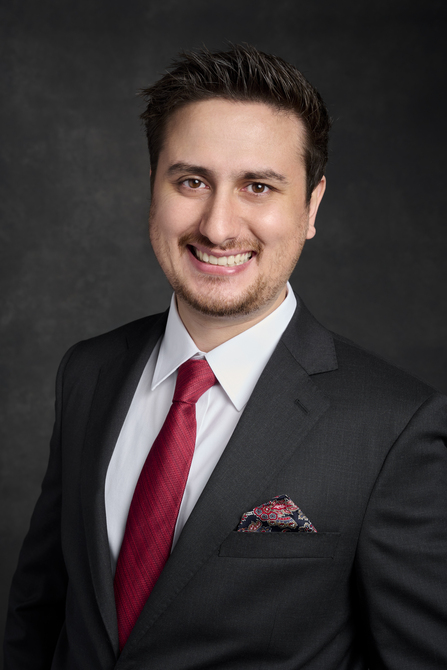A data-driven, applied economist currently employed at T-Mobile, US as a Pricing Manager.
Passionate to utilize my strong background in applied economics and data science to solve business problems.
Contact: emre@eeyz.me

Experience
Pricing Manager
· T-Mobile, USA
- Causal inference methods for demand estimation.
- Estimate lift, promo effectiveness, price and tenure elasticities.
- Optimize price portfolio and promotions.
- Difference in differences, Event Studies, Synthetic Control.
- SQL, R and Python.
Data Scientist
· Under Armour, USA
- Estimated a demand system for Under Armour products.
- Price elasticities are used for price optimization.
- SQL, Python, Applied Industrial Organization
- Part Time project-based role.
PhD in Economics
· Northwestern University, USA
- Research in Applied Economics.
- Econometrics, Time Series, Industrial Organization.
- Machine Learning, Deep Learning.
- Teaching and Research Assistantship Experience
Master in Economics and Finance
· CEMFI, Spain
- Microeconometrics, Empirical Industrial Organization
- Research in Applied Macroeconomics
BA in Economics & BS in Mathematics
· Bogazici University, Turkey
- Double Major in Economics and Mathematics
Research
Childhood Skill Formation and Intergenerational Mobility [Job Market Paper]
I estimate a childhood skill formation function for the US without making restrictive functional form or distributional form assumptions using PSID Child Development Supplement dataset which has direct measures of skill investment. I use orthogonal polynomials and quantile regressions to achieve flexibility in functional and distributional form and use a simulated EM algorithm. I also estimate a CES case, which is typically assumed in the literature for comparison. The estimation results of the flexible case is different from the CES case. In particular, the skill investment is substitute with the current skill level and complement with parents education. In addition, the uncertainty around the skill function is more negatively skewed for children of high-educated parents. These features cannot be captured by CES case all together. I highlight the role of skill formation function in implications of rising inequality for intergenerational mobility. My results suggest that a flat mobility trend despite rising inequality in the data can be potentially explained by the functional form of childhood skill formation function.
Taxes and Transfers with Nonlinear Wage Dynamics, with Nezih Guner.
[Draft is available upon request]
Following the methodology developed by Arellano, Blundell and Bonhomme (2017), we use the Panel Study of Income Dynamics to estimate a shock process for hourly wages that is both nonlinear, not AR(1), and not normal, with shocks drawn from non-parametric probability distributions. The estimated process exhibits nonlinear persistence where unusual shocks wipe out good or bad productivity histories, which can not be captured by a standard AR(1) specification. The persistence of shocks increases over the life cycle. We then build a standard life-cycle model with idiosyncratic income risk, incomplete markets, and endogenous labor supply decisions and simulate the model economy with standard, i.e. linear, and new, non-linear and non-normal, wage dynamics to study the insurance value of taxes and transfers. We find that when wage dynamics are nonlinear and nonnormal, social insurance (progressive taxes and means-tested transfers) is less valuable for poorer households but more valuable for richer ones. The estimated wage dynamics show less persistence than the standard specification, and there is more income mobility along the life cycle. This increases the value of the welfare state.
Invention and Technological Leadership during the Industrial Revolution, with Carl Hallmann and Lukas Rosenberger.
[ Paper ]
This paper provides the first empirical cross-country evidence on inventive activity during the Industrial Revolution. Idiosyncrasies in the French historic patent law allow us to compare invention rates in Britain and France across sectors based on French patent data from 1791 to 1855. Our key result is a robust, positive association of invention rates in Britain and France at the sectoral level. Furthermore, we provide the first quantitative evidence on technological leadership in invention at the sectoral level. The evidence informs a debate about whether the acceleration of technological progress during the Industrial Revolution mainly was a British or a European achievement, which has implications for theories of growth and innovation.
Engel’s Treadmill, with Clement Bohr and Marti Mestieri.
[Draft is available upon request]
Modern economic growth is characterized by constant growth in income per capita along with secular changes in the composition of the economy. We develop an endogenous growth model with directed technical change across sectors where these two facts emerge endogenously in equilibrium. The direction of innovation is determined by the market size, which evolves endogenously due to demand nonhomotheticities across sectors. Along the aggregate balanced growth path, there is perpetual unbalanced growth across sectors due to the two-way interaction between increasing income and directed technical change. As income grows, demand shifts to more income elastic sectors, triggering more innovation in those sectors, which further increases income, and so on. We refer to this perpetual process as “Engel’s Treadmill”. The model predicts that, along the balanced growth path, the relative price of more income-elastic sectors declines at a faster rate. Using US PCE price data for 138 sectors from 1959 through 2020, we provide evidence consistent with this prediction. We also show that, consistent with our theory, high income-elastic sectors experience higher innovation rate and job creation from entrants.
Are Recursive Neural Networks Useful for Macroeconomic Forecasting?, with Carl Hallmann and Federico Puglisi
[ Slides ]
We horse-race a Bayesian VAR with hierarchical priors, one of the state of the art macroeconomic forecasting models, with different neural networks. These include a simple RNN, a GRU, and a GRU regularized such that it shrinks towards withe noise (GRU-VAR). We find that any sufficiently flexible, and well regularized model has similar forecasting performance as the Bayesian VAR. We find that our GRU-VAR easily outperforms the BVAR in forcasts that go further than one step.
Mobility of Inventors: Evidence from Historical Patents of France and UK, with Walker Hanlon.